Centro de Recepción de Visitantes, Atapuerca by a3gm + Mata y asociados
A perforated metal box encases the concrete visitor centre for the Atapuerca archaeological site in northern Spain by architects a3gm and Mata y asociados (+ slideshow).
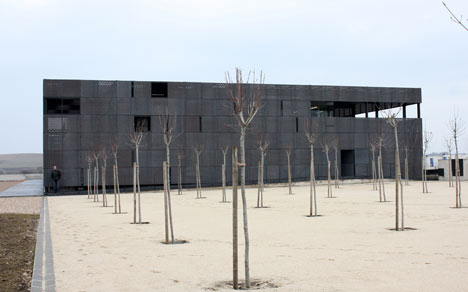
The Atapuerca UNESCO World Heritage site in Burgos, northern Spain, is home to the fossilised remains of Europe's earliest humans.
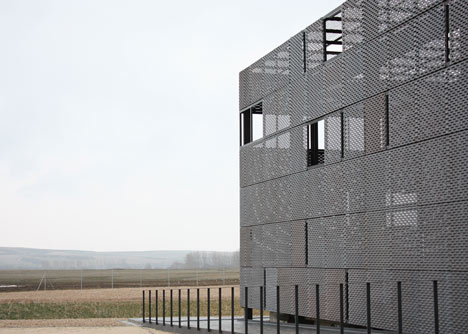
The concrete visitor centre is inserted inside a larger enclosure of perforated metal squares.
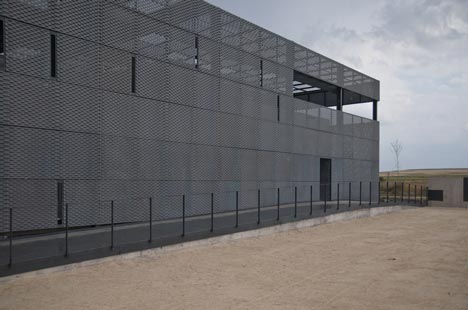
The patterns in the metal box are designed to "resemble the piles of straw bales and the dark clumps of trees in the area," the architects told Dezeen.
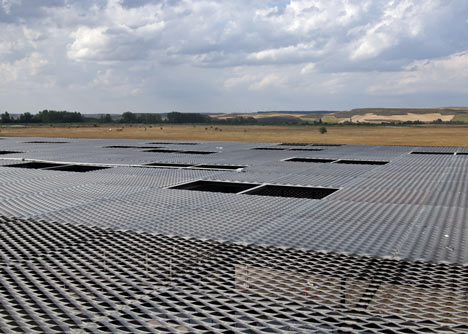
Inside the visitor centre are classrooms, lecture halls, an information area and a cafeteria, as well as administrative areas.
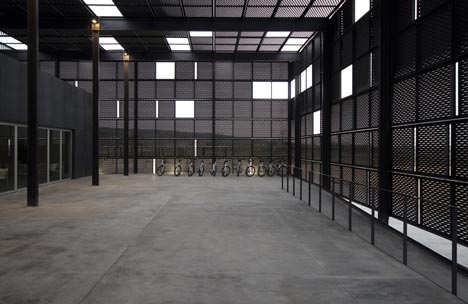
Outside the building is a pond of oxygen-producing plants which processes water from the centre and nearby archaeological park.
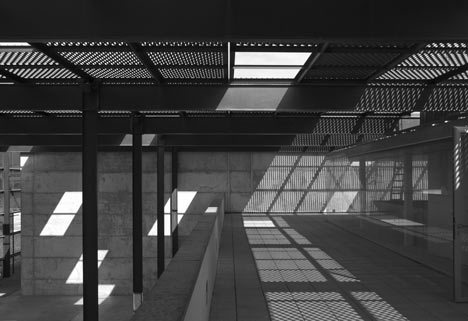
A canopy of vines will eventually grow on a metal grid to cover the car park.
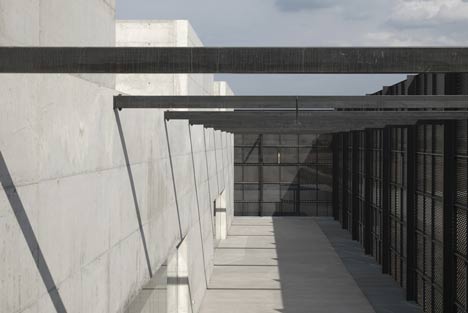
Earlier this year we posted a special feature about recently completed public buildings in Spain, including museums, town halls and markets – see it here.
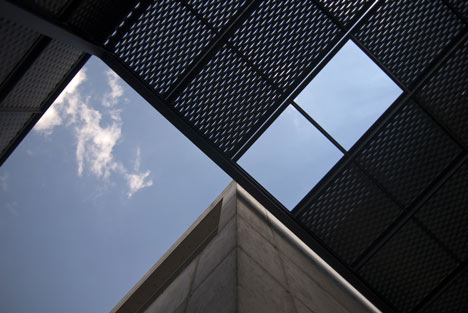
See all our stories about Spain »
See all our stories about cultural buildings »
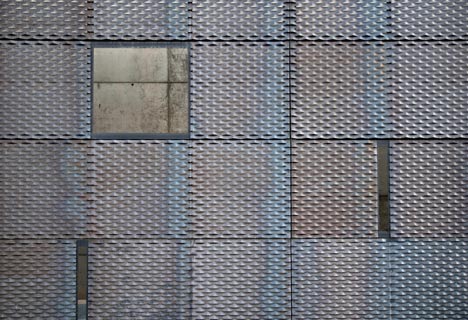
Photographs are by Mata y asociados.
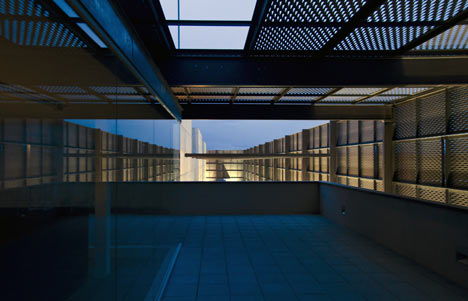
Here's some more information from the architects:
Centro de Recepción de Visitantes, Atepuerca, Burgos
Visitors Centre, Atapeurca, Burgos
Architects: a3gm + Mata y asociados
Location: Atapuerca, Burgos, Spain
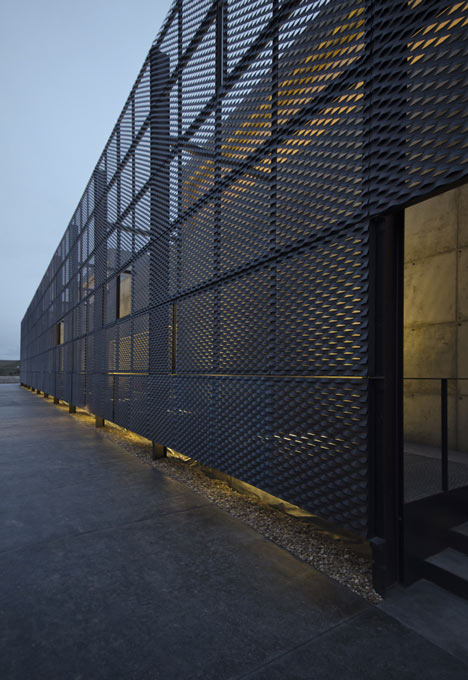
Concept: Jesús Alba Elías, Laura García Juárez, Jesús García Vivar, Smara Gonçalves Diez, Carlos Miranda Barroso
Project and Construction: Salvador Mata Pérez
Collaborators: Myriam Vizacaíno Bassi, Javier Encinas Hernández, Alberto López del Río, David Muñoz de la Calle, Luis Antonio Pahíno Rodríguez, architects; Tomás R. Dientes, quantity surveyor
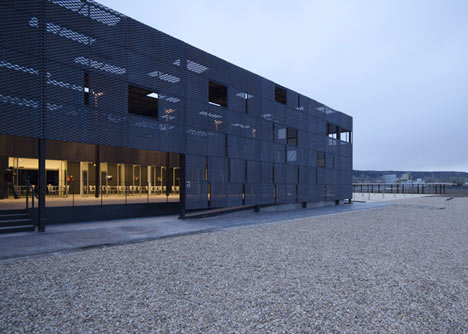
Engineers: GHESA, A2V Ingenieros
Environmental Engineering: HYDRAInvestor: Junta de Castilla y León. Consejería de Cultura y Turismo. Dirección General de Patrimonio Cultural
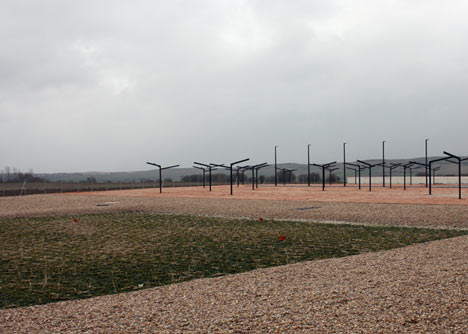
Project Area: 1.625 m2 sqm
Project Year: 2006, 2009
Construction Year: 2009–2010
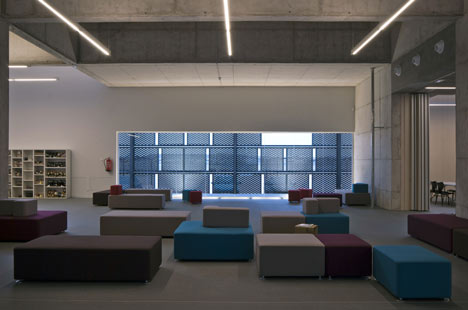
Contractors: SACYR S.A.U., NUCLEO S.A.
Budget: EUR 3,500,000
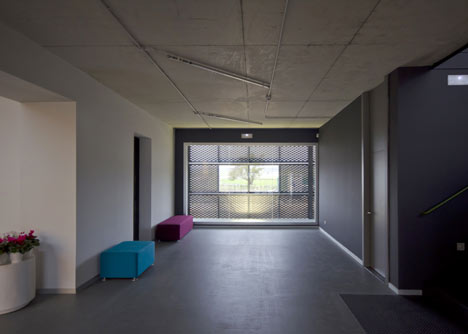
The purpose of the project is the definition of the Visitors Centre of Atapuerca paleoanthropological site and the rearrangement of the environment with service and relationship areas with the existing archaeological park.
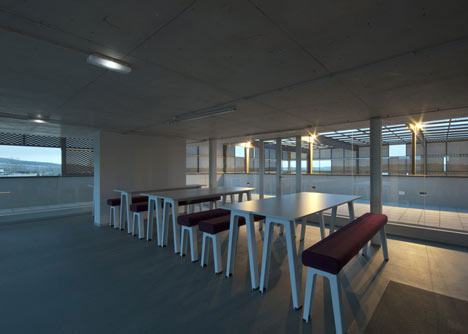
The proposal starts off from a double reading of the building: from its presence in the landscape and its inner functions.
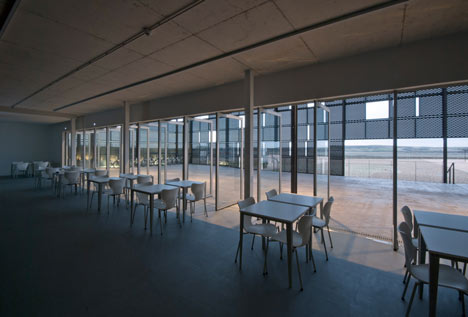
In between proposed a relationship of a certain lack of boundaries in the band between the inner chamber and the outer shell is a space that expands on the main access and allowing expansion of the cafeteria and an extension of the exhibition area.
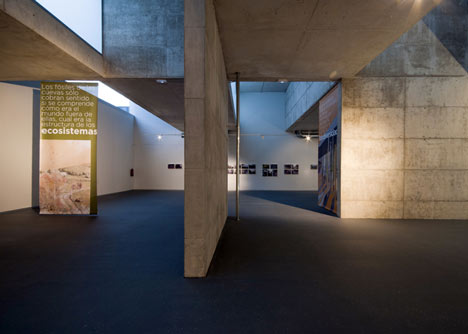
The image of the building initially refers to the volumes present in the surrounding landscape: natural elements ordained by human intervention, such as straw piles or clumps of trees.
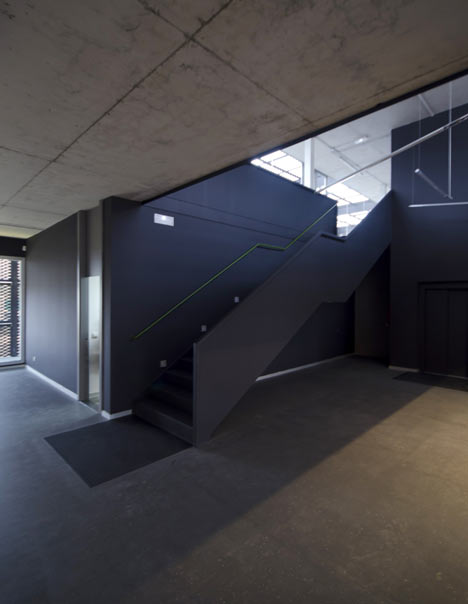
Behind this reading of the envelope that filters and qualifies both the perception of the building inside and outside the image from the inside of the rooms, the direct sunlight, wind, appears logical scale and performance of a building exchange visitors and cultural flows.
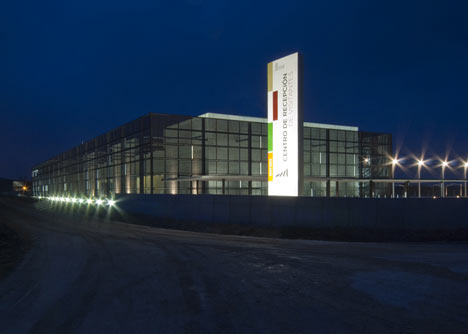
The interior facades are conceived as a volume cut in plan to allow expansion in the interstitial space, and in section to introduce daylight and express to the outside the performance of the parts.
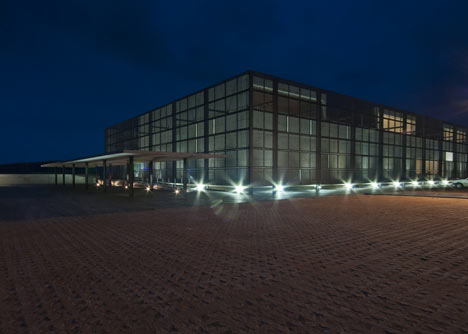
The Centre also seeks metaphorical proximity to the site, that effectively contributes to the production of a new architectural organism, by recreating a part of the building that belongs to the earth (stereotomic) and one that is detached from it (tectonic), a mask protection as light as possible wrapping the whole.
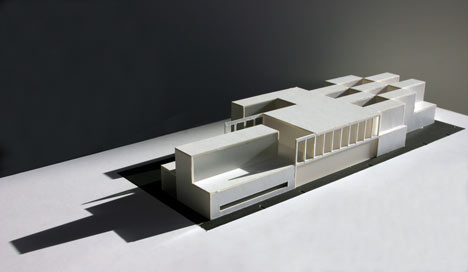
In this sense, the building is designed as a big concrete box - petrous nature - pierced by large skylights, and an outer perforated net that wraps and covers acting as a second skin.
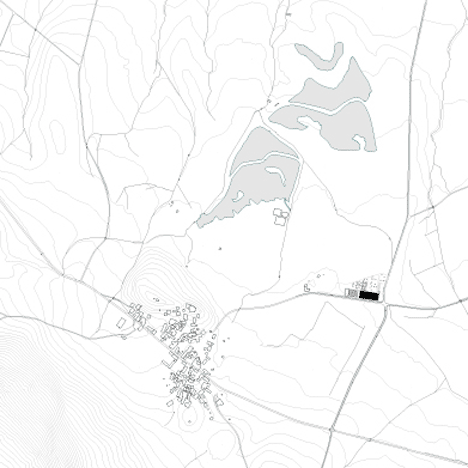
Site plan
The interstitial space generated between the net and the concrete box recalls the archaeological site workspace. At the building entrance this space is conceived as a rest area, and the one of the opposite corner as a multipurpose outside area.
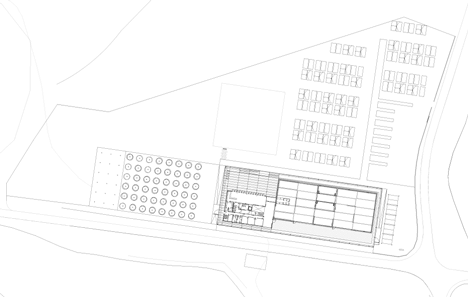
Plan – click above for larger image
The indoor exhibition space chooses a route between major structural concrete screens in addition to the presence of the lecture halls. At the entrance there is a space for information and sales of publications, a cafeteria and administrative and service areas.
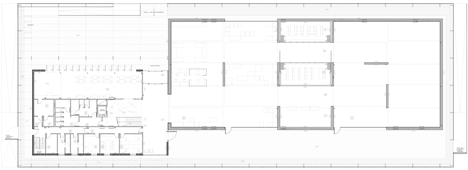
Ground floor plan – click above for larger image
The classrooms are designed as modular elements with multiple possibilities of use and relationship between the polyvalent area and the exhibition area, from a small room for about 25 people to a conference hall for 100 people.
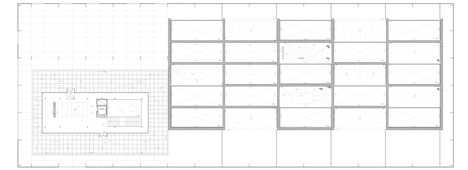
Upper floor plan – click above for larger image
The lightweight exterior enclosure has a discontinuous character, it is punctured or disappears in singular points as the entrance plaza and the gazebo.
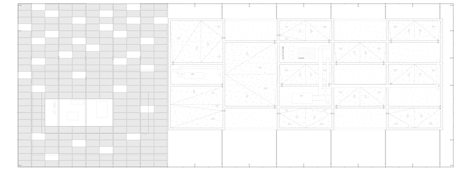
Roof plan – click above for larger image
It generates a variable section in the access area with very strong relationships between the open space of the square and the space of the terrace-gazebo, in contrast to the austerity of the outer box.

Section – click above for larger image
To solve the necessarily large car parking area, the idea of nature is recreated again through metal elements, metaphors of trees, on which in the future vines will grow to shape the final camouflage of parked vehicles.

Section – click above for larger image
A light canopy and a wooden grid between the car park and the building will form an exterior square for outdoor activities.

North elevation – click above for larger image
Outside a pond of macrophytes solves the sanitation of both the Visitor Center and the next Archaeological Park.

East elevation – click above for larger image
The bed of the pond is a biotechnology system that mimics the process of self-purification that spontaneously occur in natural wetlands, based on the use of plants and other aquatic lower organisms.

South elevation – click above for larger image
This system is in perfect harmony with the new policies and sustainable development needs, providing high purifying efficiency with low operating and maintenance costs. The visit to the projected pond finally has become part of the Visitors Center’s educational route.

West elevation – click above for larger image